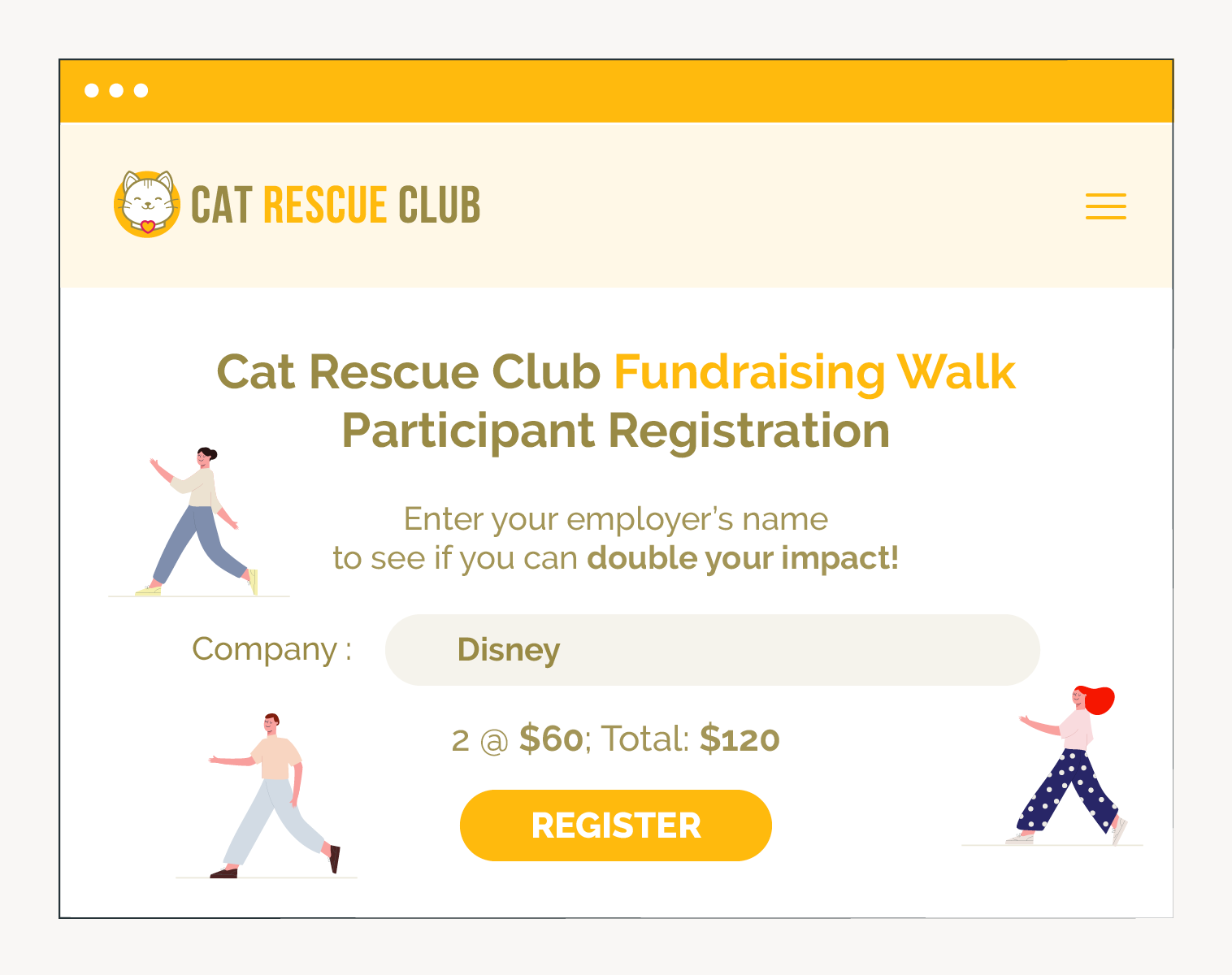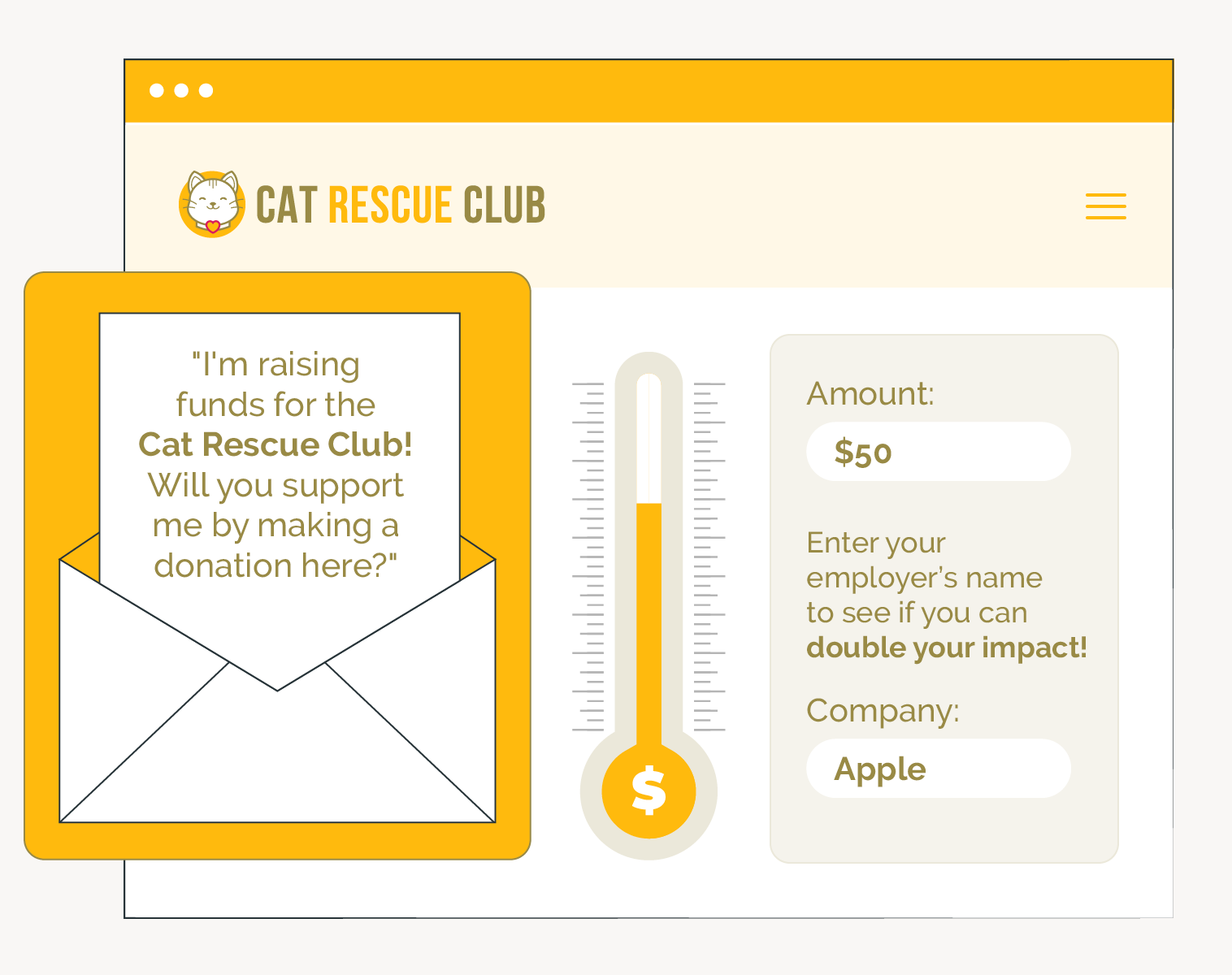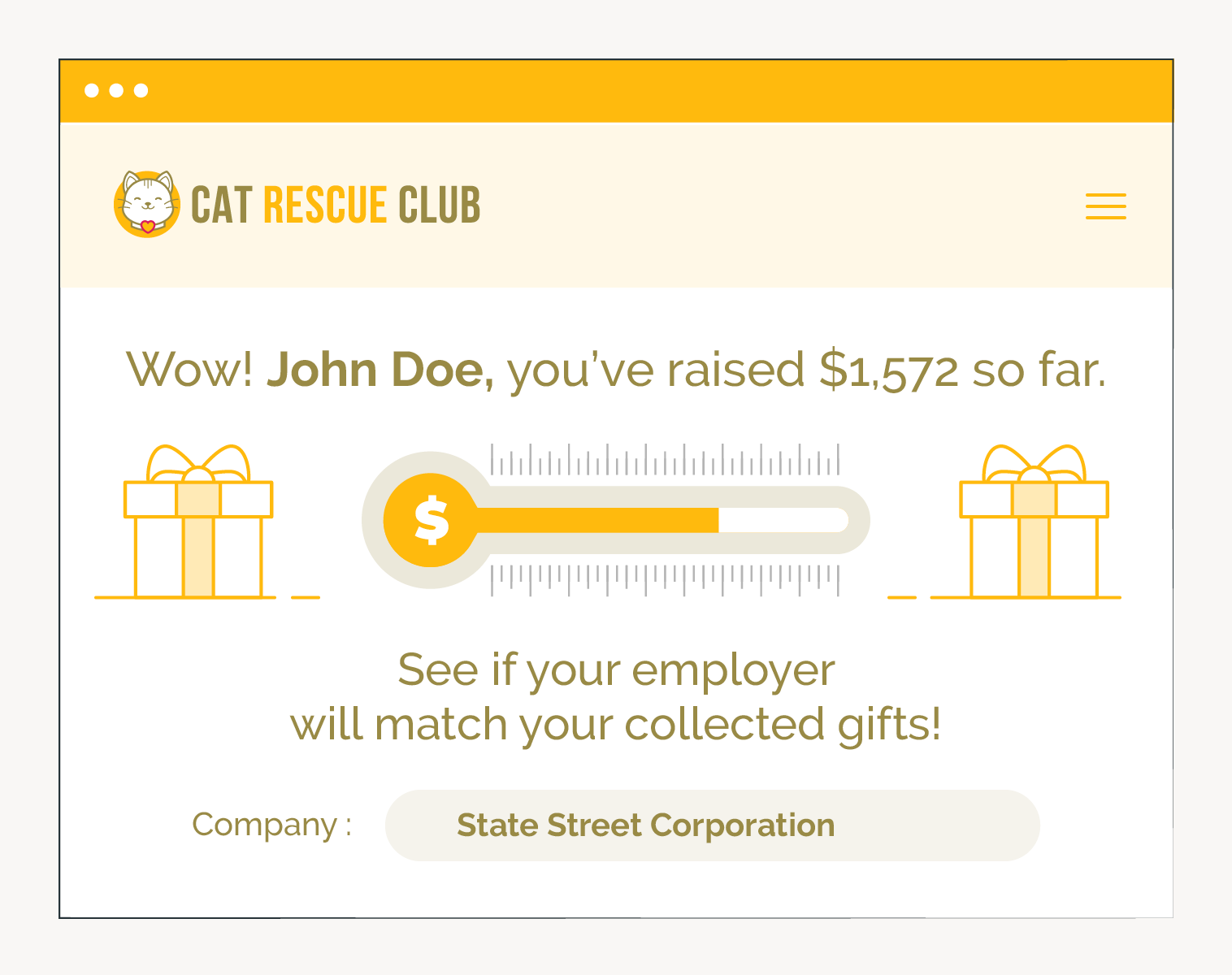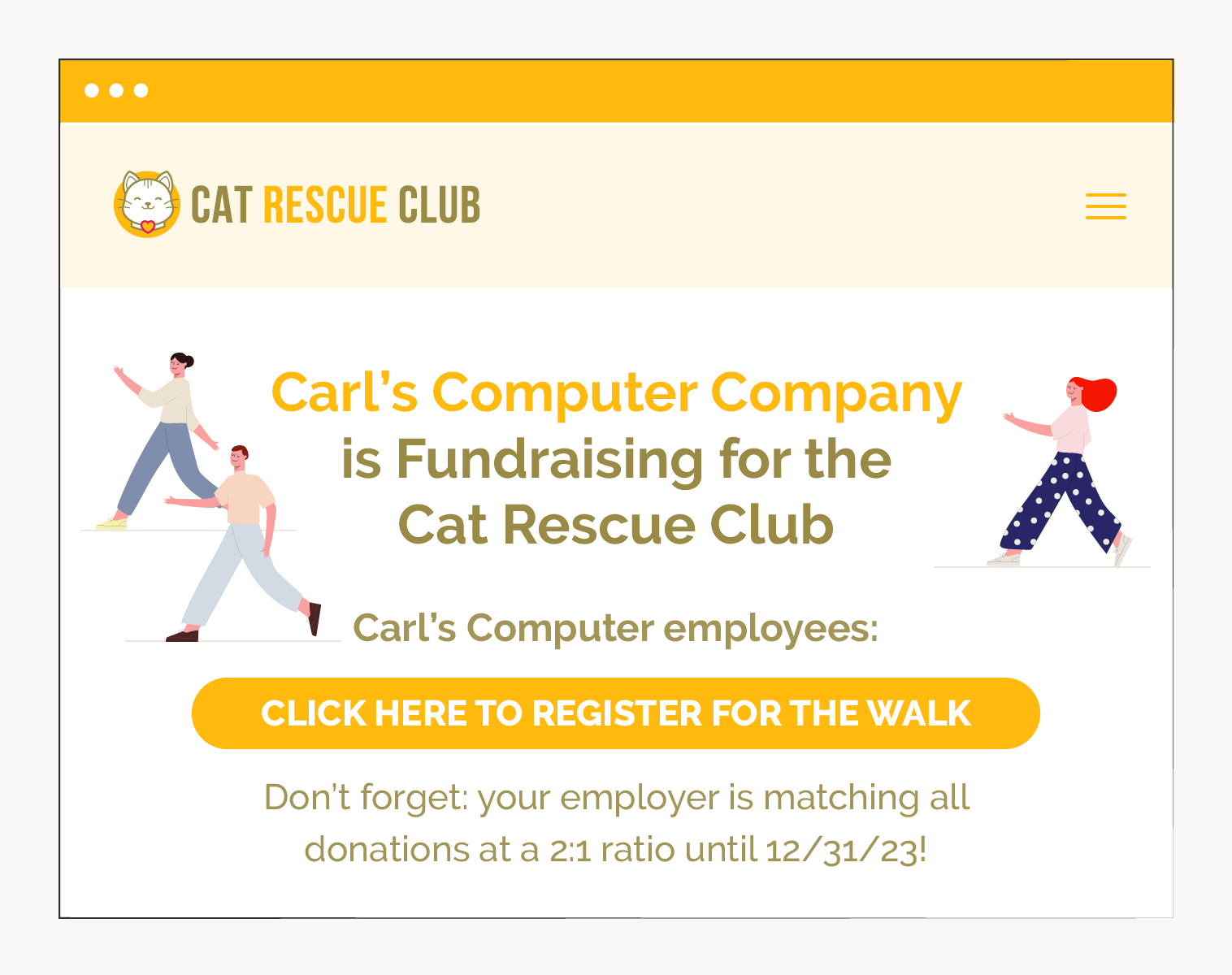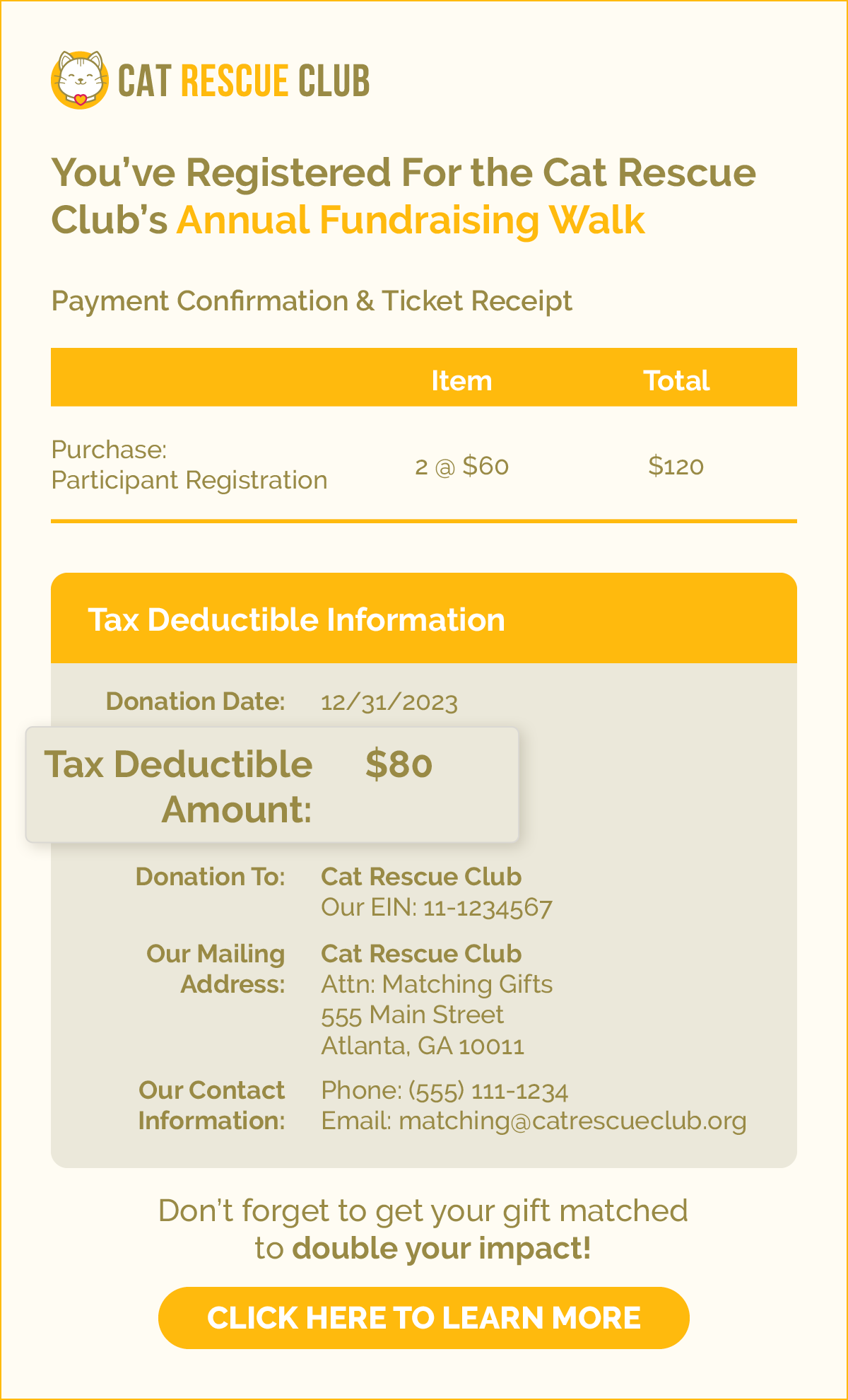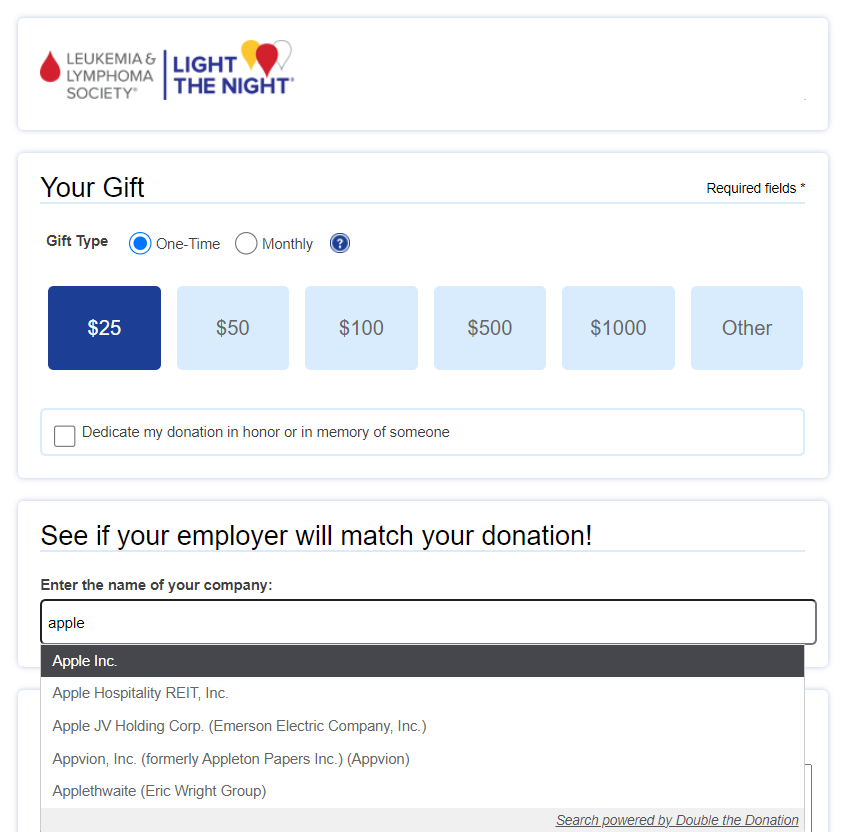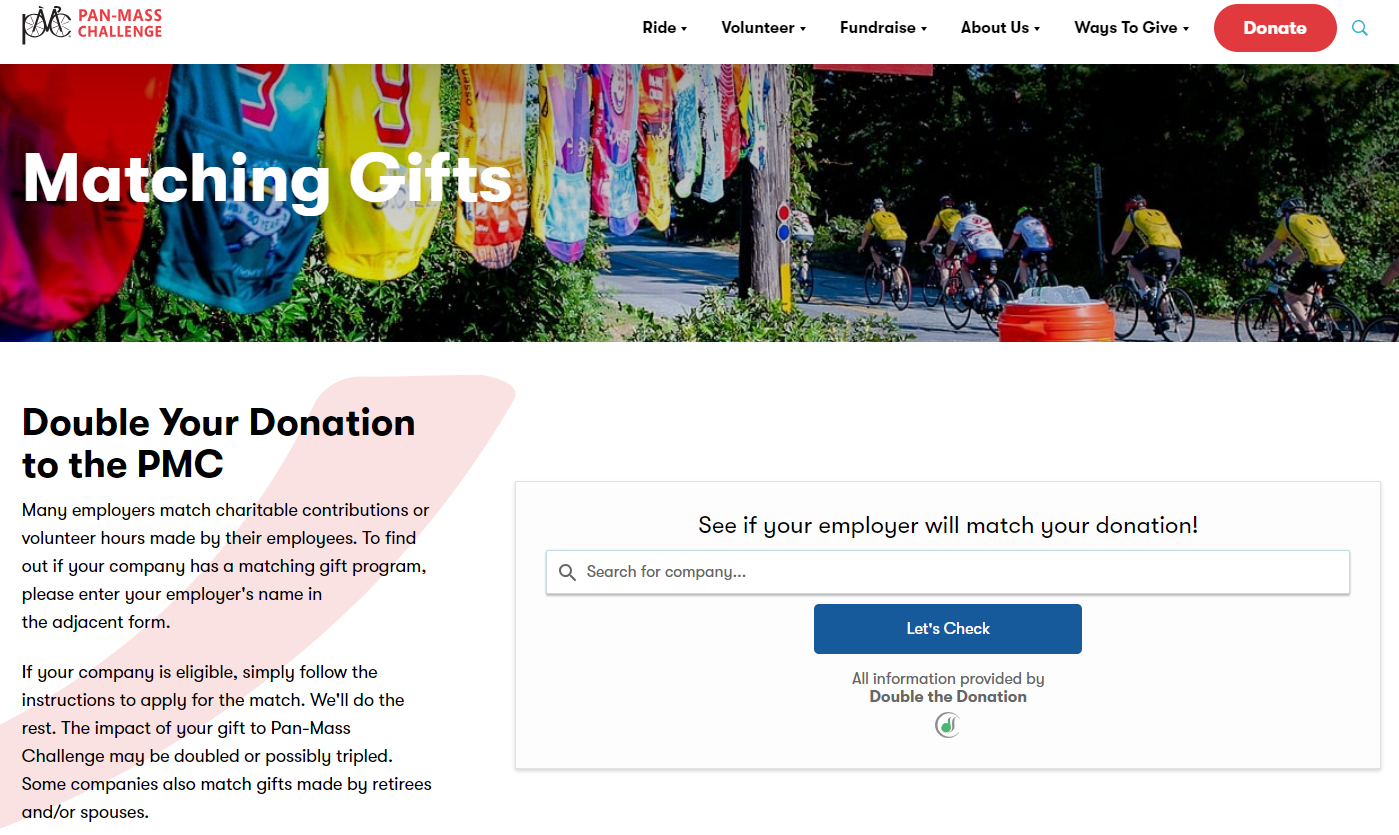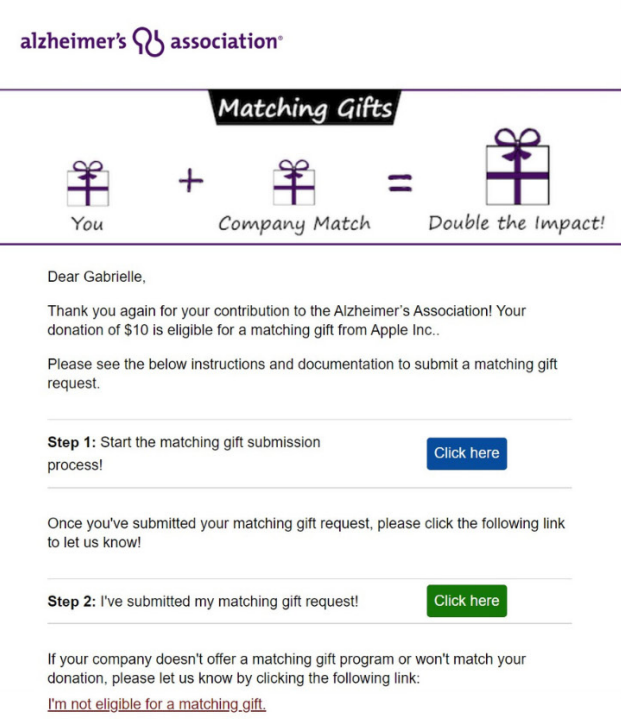How to Harness Peer-to-Peer Fundraising and Matching Gifts
Peer-to-peer fundraising is a great way to extend your fundraising reach and collect additional revenue to fuel your mission. So is a well-thought-out matching gift marketing plan. When you combine the power of peer-to-peer fundraising and matching gifts, you’ll have something particularly impactful in store for your organization.
But how can you marry the two strategies to produce a fundraising effort that brings giving and engagement to new heights for your cause? Walk through the key steps and recommendations here to find out.
In this informative guide, we’ll cover the following:
- Peer-to-Peer Fundraising Basics
- The Impact | Multiplying P2P Success With Matching Gifts
- 4 Ways to Secure Matching Gifts From Peer-to-Peer Fundraising Campaigns
- Best Practices for Smart Peer-to-Peer Fundraising and Matching Gifts
- Bonus! How Top P2P Organizations Incorporate Matching Gifts In Their Efforts
Your supporters love giving to your mission in a way they know is making a difference. Peer-to-peer fundraising and matching gifts each allow them to expand their impact beyond what would have been possible on their own.
Now, let’s jump in!
Peer-to-Peer Fundraising Basics
Before we dive into our specific tips for layering peer-to-peer fundraising and matching gifts, it’s important to establish a solid understanding of the peer giving opportunity. Here’s a quick refresher:
What is peer-to-peer fundraising?
Also known as P2P, social, or team fundraising campaigns, peer-to-peer fundraising is a key revenue-generation strategy for nonprofits, schools, and more. This method is characterized by individual fundraisers leveraging their personal networks to solicit donations on behalf of the causes they support.
In other words, with a peer-to-peer fundraising approach, an organization empowers its donors, volunteers, and other supporters to request funds from friends, family, colleagues, and anyone else in their social orbits.
Today, these gifts are largely contributed online, often facilitated through dedicated peer fundraising tools that provide each volunteer with a personalized fundraising page. From there, fundraisers are encouraged to customize their campaign pages to share information regarding their background, stories, and connections to the organization’s cause.
Major benefits of peer fundraising
Peer-to-peer fundraising is a unique way to garner support from existing supporters through their personal connections. This model expands fundraising reach organically—and exponentially—effectively tapping into diverse segments and demographics an organization may have been unable to reach on its own.
Check out this example:
Let’s say your nonprofit pet shelter has a generous and devoted donor named John Doe. John Doe gives regularly to support the organization from which he adopted his beloved furry friend a few years back. You’re familiar with John, who is a key contributor to your cause. However, you don’t know the individuals in John’s network—his family, friends, colleagues, and more. You’d love to expand your reach to encompass more people like him, so you initiate a peer-to-peer fundraising campaign to which John signs on as an ambassador.
Throughout the course of the fundraiser, John encourages his loved ones to support his efforts on behalf of your organization. He personalizes his fundraising page with photos and stories of his cherished pet in the time since it was rescued.
When he shares the link to his campaign, those in John’s circle are eager to pledge their support for his upcoming fundraising walk. After all, they know how much John’s pet means to him, and they have your organization to thank for it!
Peer-to-peer fundraising thrives on the authenticity of personal narratives, making campaign asks increasingly compelling for those who get involved. Or, at the very least, it gets your organization’s name and cause out in front of a greater audience, driving increased awareness for your mission.
The viral nature of the campaigns also amplifies visibility, attracting new supporters and establishing social proof. That’s the belief that when individuals see their peers supporting a cause, they’re more likely to do so—ultimately leading to more giving overall.
Check out this brief benefit breakdown to see more advantages of peer fundraising:
- Engaging with new audiences — When your supporters reach out to their own networks with a fundraising ask on your behalf, you’re able to reach groups who may have been previously inaccessible to your team on their own. Once these new supporters have gotten involved, you can begin the process of stewarding them into long-term donors themselves!
- Providing new ways for supporters to get involved — Many of your supporters would love to give more than their financial limitations will allow. Peer-to-peer fundraising can be a great way for this group to extend their support in a new and exciting way—especially when you add in matching gifts!
- Increasing fundraising ROI — The decentralized structure and volunteer-driven nature of peer-to-peer giving campaigns reduce initial fundraising costs. This allows your team to reinvest those resources elsewhere, including funneling more into tangible impact on your mission.
And it’s a popular way for individuals to show their support for their favorite organizations! In fact, fundraising research estimates that over 10% of all U.S. and Canadian donors participate in peer-to-peer fundraising efforts benefitting nonprofit organizations.
Here’s why:
- Driving cause-related impact — Your donors care about your mission, and they want to see your organization make an impact in that realm. Supporters are typically happy to become advocates for your cause when they know it will make a positive difference.
- Strengthening mission ties — The more connected a supporter feels to your organization, the more likely they are to stay engaged with your efforts over time. Becoming a peer fundraiser for your cause places an individual squarely on your team, reinforcing an existing bond that keeps them coming back time and time again.
- Growing sense of achievement — Empowering individuals to champion causes within their networks fosters a sense of ownership and community engagement. And when they bring in any amount of funding for the organization for which they’re fundraising, they’re able to feel a significant sense of accomplishment in the role that they’ve played.
And don’t forget the benefits reaped by your organization’s beneficiaries, either. With additional funds flowing into your nonprofit and more dedicated donors to sustain your efforts in the long run, your mission’s audience can experience new and improved programs and services, too!
Popular types of peer-to-peer fundraisers
Peer-to-peer giving is not a one-size-fits-all effort. In fact, there are countless campaign types and fundraising ideas your institution may choose to implement. And they can all provide substantial results in terms of engagement, funding, and more.
Here are a few of the most familiar examples of peer-to-peer fundraising to consider:
Run/walk/rides — Including 5K races, marathons, cycling events, and more, participants seek sponsors who donate or pledge their support for the effort.
- Other “thon-style” events — Supporters partake in any continuous activity (dancing, reading, gaming, standing, etc.), while loved ones pledge funds to fulfill after the event based on their sponsee’s performance.
- Birthday or holiday fundraisers — Foregoing traditional gifts, supporters request donations to a chosen organization. This empowers personal celebrations like birthdays and holidays to make a difference for their favorite causes. (Think: Facebook Fundraisers!)
- Personal challenges — Participants take on individual challenges, such as giving up a habit, learning a new skill, or setting a personal goal. Then, for every day/practice/success/etc., pledgers contribute their support accordingly.
- Memorial or tribute campaigns — Campaigns held in honor of a loved one. Typically supporting a cause that held significance to the recently departed. (e.g., “In lieu of flowers, please consider making a donation to [designated charity] using the giving page linked here.”)
- Giving days or months — Campaigns hosted within designated short-term fundraising periods. Often based around affinity months or mission-related celebrations (e.g., LGBTQ+ pride month, breast cancer awareness day, Giving Tuesday, etc.)
The consensus? Many of these efforts incorporate impact-driving elements such as urgency, gamification, digital engagement, and healthy competition. The diverse campaign options not only raise support effectively but also cultivate a sense of shared purpose and community.
The Impact | Multiplying P2P Success With Matching Gifts
Did you know combining the power of peer-to-peer fundraising and matching gifts can assist organizations in reaching and surpassing their fundraising goals?
When a company offers matching gifts, it agrees to double (or triple) the donations its employees make to qualifying nonprofits. As a result, matching gifts can offer a powerful multiplier effect to nearly any fundraiser, bringing about astounding success.
One of the best examples is with peer-to-peer fundraising campaigns. Combining peer-to-peer fundraising and matching gifts will effectively scale up your efforts by directing additional revenue toward your cause. And it’s not just the corporate funding, either. Individual donors are more likely to give—and to give generously—when they know a match is available.
Why? Peer-driven campaigns naturally foster a sense of community and shared purpose. When coupled with the heightened impact produced by matching gifts, they become even more compelling.
In fact, corporate giving research indicates that mentioning matching gifts leads to a 71% increase in fundraising response rates. And organizations see 51% growth in their average donation size compared to gift appeals that don’t incorporate matching gifts.
Incorporating matching gifts into your overall peer fundraising strategy also allows donors to make a greater impact on your mission. Matching gift donors are more inclined to have a positive giving experience and, thus, stay involved with your organization in the long run.
4 Ways to Secure Matching Gifts From Peer-to-Peer Fundraising Campaigns
There’s a wide range of companies that offer matching gift programs, and the programs themselves can vary from one employer to the next. All in all, we’ve identified four key ways organizations can secure matching gifts from peer-to-peer fundraising campaigns.
These include the following:
Matching event registration fees
When supporters sign up for your organization’s upcoming peer-to-peer fundraiser, they may be asked to pay a registration or participation fee. Did you know that these types of transactions can qualify for a match from the individual’s employer?
Different companies set different rules to guide their matching programs and establish which types of gifts they will match. However, the most common stipulation is that the contribution to the organization should be a tax-deductible one. While registration fees (as a whole) typically do not fall into this category, a crucial portion of the fee likely does qualify for a tax deduction. Thus, the individual needs to know how much of their total transaction falls under this umbrella and, therefore, is matchable.
For example, let’s say a $50 fee buys an event t-shirt and meal for each registrant. In that case, you’d need to calculate and deduct the Fair Market Value (or FMV) of those items—as well as any other provisions—from the total transaction amount. What’s left likely qualifies for a corporate match from the registrant’s employer.
Our recommendation: As you implement a peer-to-peer event registration process, be sure to embed a matching gift search tool to collect employment data within your online registration form. Once equipped with this information, you and your donors will be empowered to locate available matching gift opportunities and take the appropriate next steps in the process!
Matching individual P2P donations
In addition to volunteer fundraisers soliciting donations on your organization’s behalf, another key player in the peer-to-peer fundraising game is the one (or many) who support the cause through a loved one’s P2P page. And this group can qualify for matching gifts, too!
Thus, ensure that any matching gift promotions incorporated in your traditional giving process are also reflected in your peer-to-peer efforts. (For example, collecting employment data with a company search tool on your donation form, incorporating a program database widget on your confirmation screen, browsing for corporate email addresses, instituting automated email cadences, and more.)
In this scenario, the match experience is the most similar to a gift contributed through your organization’s standard donation form equipped with Double the Donation functionality. An individual fills out an online giving form, provides their company name using a search tool, and submits the contribution. The biggest difference is that the gift is facilitated through a peer-to-peer fundraising platform rather than your basic donation tool.
Our recommendation: If you’ve invested in a matching gift automation tool like Double the Donation’s 360MatchPro, be sure to enable integrations with all of your giving tools! This should include your standard giving forms, CRM or donor database, and peer-to-peer fundraising platform.
Luckily, 360MatchPro seamlessly partners with 90+ of the sector’s largest donation and peer giving tools. Adding the functionality to your P2P forms should be simple! Just remember: you don’t want matches to go unclaimed just because this fundraiser is being hosted on a new platform.
Matching fundraisers’ total collected gifts
Most companies’ matching gift policies require that matchable gifts are contributed directly by the employee requesting a match. But some employers offer fundraising matches, too—either as a subcategory of matching gifts or a separate program altogether.
What’s the difference?
In a fundraising match program, a company matches the sum of all gifts contributed to an employee’s peer-to-peer fundraising campaign. Despite the funds not coming directly from the individual’s wallet, the employer supports their fundraising efforts by doubling all donations. (E.g., John Doe collects $1,572 from 18 donors in his network. John’s employer, State Street Corporation, provides a fundraising match for an additional $1,572, bringing his total to $3,144.)
While these programs are less commonly offered than traditional matching gifts, the impact, when available, can be significant. So, it’s not something you want to overlook, especially when looking to revamp your peer-to-peer fundraising and matching gifts efforts.
Our recommendation: Use the employment data collected within the peer-to-peer registration process to screen for any existing fundraising match programs your participants’ employers may offer. If available, pass the information along to your supporters and encourage them to take the next steps outlined in their companies’ program guidelines.
Remember: implementing an automation tool like 360MatchPro allows you to effectively leverage your donors’ workplace giving information and uncover the best opportunities for support through your donor base!
Establishing custom matching gift partnerships
Sometimes, companies are interested in giving back to their communities and in getting their employees on board to do so. However, they don’t yet offer existing matching gift initiatives. In this case, they may decide to form a custom matching gift partnership with a specific nonprofit organization. And this final type of matching gift program pairs particularly well with peer-to-peer fundraising.
All a company has to do is let its employees know they’re sponsoring an upcoming fundraising event—such as a run/walk/ride—by matching team members’ associated gifts. The match offer will incentivize employee participation in the campaign and ultimately drive more revenue and engagement for your organization.
Our recommendation: Scour your database for dedicated supporters employed by companies without matching gift programs already. Then, see if these individuals would be interested in taking on a unique advocacy role for your organization. If so, encourage supporters to pitch custom matching gifts to their employers in tandem with an upcoming peer-to-peer fundraising event. We even provide a helpful template for doing so in this guide!
Alternatively, you may decide to reach out to such companies on your own. Still, pursuing partnership opportunities with your supporters’ employers can be an excellent way to get your foot in the door. Plus, it allows your team to demonstrate shared interests and audiences with a prospective partner.
Best Practices for Smart Peer-to-Peer Fundraising and Matching Gifts
Setting your organization up for maximal matching gift success is easy when you know what to do. Check out these expert-approved best practices to promote awareness and participation in matching gifts and peer-to-peer fundraising efforts alike.
1. Prepare P2P fundraisers with matching gift knowledge and resources.
One critical challenge facing nonprofits in their peer-to-peer fundraising and matching gifts efforts is a lack of knowledge altogether. If donors have no idea their employers will double their contributions to your cause, they won’t take the steps required to request their company matches. Thus, to address the awareness issue in a peer-to-peer fundraising campaign, we recommend empowering volunteer fundraisers with the knowledge and resources to advocate for the opportunity to their peers.
This way, if a potential donor were to seek information regarding a donation match, the fundraiser would know how to handle the inquiry. You should also provide a range of easily accessible resources, such as pre-made graphics, email, text, and social media templates, and other educational materials they can use to inform their own audiences about the chance to amplify their support.
For example, a supporter fundraising for a pet rescue might share a graphic like this one on their social media pages. In the caption of their post, they’d link to the organization’s dedicated matching gifts page where interested donors can learn more about the opportunity.
2. Provide supporters with FMV/tax deduction info regarding their gifts.
Since most companies will only match the tax-deductible portion of any nonprofit transaction, simplify the process for all parties by making this information readily available.
We suggest identifying the figure beforehand and providing it for each event participant. Consider building it into the registration page itself, the payment confirmation screen, and a follow-up email that includes the complete gift receipt.
In order to calculate the tax-deductible total, you’ll need to determine the Fair Market Value—or what your event ticket is tangibly worth. According to the IRS, an item’s FMV is the price it would sell for on the open market. Or the price that would likely be agreed on between an informed and willing buyer and an informed and willing seller.
Subtract that figure from your total transaction cost, and you’ll have your tax-deductible donation amount!
3. Automate the process with an integrated peer-to-peer and matching gift solution.
Nowadays, successful peer-to-peer campaigns rely on powerful and user-friendly giving platforms designed specifically for social fundraising success. In order to incorporate matching effectively, it’s important to equip your team with a seamlessly integrated matching gifts solution.
Doing so allows you to scale up your matching gifts identification, education, follow-up, and reporting with no additional effort required of your fundraising team. For example, 360MatchPro by Double the Donation provides:
- Screening and identification tools to uncover match-eligible donors in your database
- A user-friendly search widget for donors to research their eligibility and take guided steps to complete their submissions
- Automation capabilities to streamline tailored outreach to these donors
- Security features to protect private donor and organization data
- A full reporting dashboard that aids in measuring and analyzing your organization’s matching gift efforts
- Ready-built integrations with each of the leading peer-to-peer fundraising platforms
The platform can even streamline the donor experience by providing supporters easy access to the information they need. And it ultimately increases the likelihood of successful matching gift submissions—meaning more funding for your organization.
Interested? Check out this two-minute overview to learn more:
Bonus! How Top P2P Organizations Incorporate Matching Gifts In Their Efforts
See the above practices in action. Explore the ways these well-known organizations encapsulate smart matching gifts and peer-to-peer fundraising initiatives. As you get inspired, make a note of the strategies from which you think your team can benefit.
P.S., the following organizations are part of the Peer-to-Peer Top 30—an annual breakdown of the highest-grossing social fundraising events each year. These three were also featured in this Top Nonprofits analysis of leading organizations’ matching gift digital efforts!
Leukemia & Lymphoma Society’s Light the Night
Hosted by the Leukemia & Lymphoma Society, Light the Night is one of the largest peer-to-peer fundraising walks each year. And the LLS team behind the event does an excellent job integrating matching gifts into their efforts.
How? The Leukemia & Lymphoma Society strategically mentions matching gifts in the Light the Night donation form to ensure all donors are exposed to the opportunity. Plus, it also uses the form to collect employment information, which is then used to screen for match-eligible gifts.
Here’s what the peer-to-peer fundraising form looks like:
Then, after giving, supporters receive thoughtful follow-ups reminding them about potential matching opportunities and encouraging them to get involved.
Dana–Farber Cancer Institute’s Pan-Mass Challenge
The Pan-Mass Challenge, which benefits Dana-Farber Cancer Institute, goes above and beyond to incorporate matching gifts into its peer-to-peer fundraising efforts.
How? The cycling event hosts a detailed matching gifts page on its website, complete with an embedded matching gift company search tool and other valuable information. When a donor searches their employer’s name, they’re provided with an in-depth breakdown of an associated matching gifts program. This includes eligibility criteria, match information, and even direct links to their online submission forms.
Take a look at the matching gift page here:
By providing easily accessible information, the Pan-Mass Challenge team ensures donors are equipped with the tools needed to take advantage of matching gift opportunities should they choose to do so.
Alzheimer’s Association’s Walk to End Alzheimer’s
The Alzheimer’s Association’s Walk to End Alzheimer’s takes a proactive approach to matching gifts within its peer-to-peer fundraising campaigns. After gathering employment data within the giving process, the organization segments donors by match eligibility and triggers targeted follow-ups accordingly.
For match-eligible donors, these follow-up emails include direct links to their companies’ guidelines, policies, and online submission links. It ultimately simplifies the process for donors to initiate matching gift submissions on their own.
Check out a sample matching gift follow-up email below:
This type of strategic post-donation communication ensures that matching gift opportunities—and the organization itself—remain at the forefront of donors’ minds. And it gives each recipient an easy way to maximize the impact of their contributions in support of the cause.
Final Thoughts on Peer-to-Peer Fundraising and Matching Gifts
Matching gifts can take your peer-to-peer fundraising events to the next level. You might be surprised at how quickly your investments in the strategies can multiply! Just ensure you use the right tools and approaches to get the most out of the efforts for your organization.
Educate your staff and supporters on the opportunities at play. Communicate the tangible impact of matching gifts to inspire participation. And automate the process from start to finish to scale up your fundraising efficiency.
Keep learning! Check out these additional resources to continue growing your peer-to-peer fundraising and matching gifts knowledge:
- Marketing Matching Gifts | A Guide for Avid Fundraisers. Dive into our comprehensive matching gift marketing guide designed for enthusiastic fundraisers like you. Uncover key strategies and insights to effectively promote matching gifts and maximize your fundraising efforts.
- 20+ Matching Gift Companies: Leaders in Corporate Giving. Explore our curated list of leading companies with robust and well-known matching gift programs here. See if your donors work for these businesses and more to uncover match opportunities with ease.
- Top Peer-to-Peer Fundraising Software (What to Look For). Bring your peer giving strategy to new heights with the right social fundraising platform. Check out our recommendations in this buying guide, and don’t forget to look for an integrable matching gift solution, too!
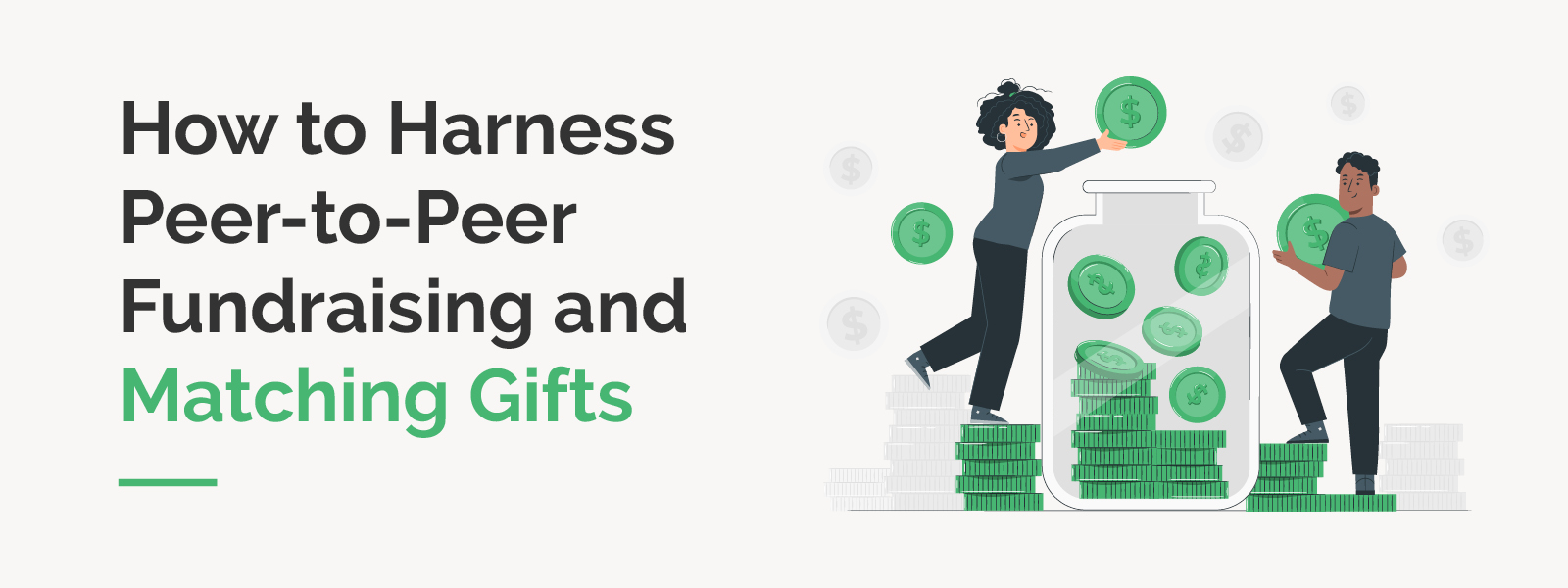

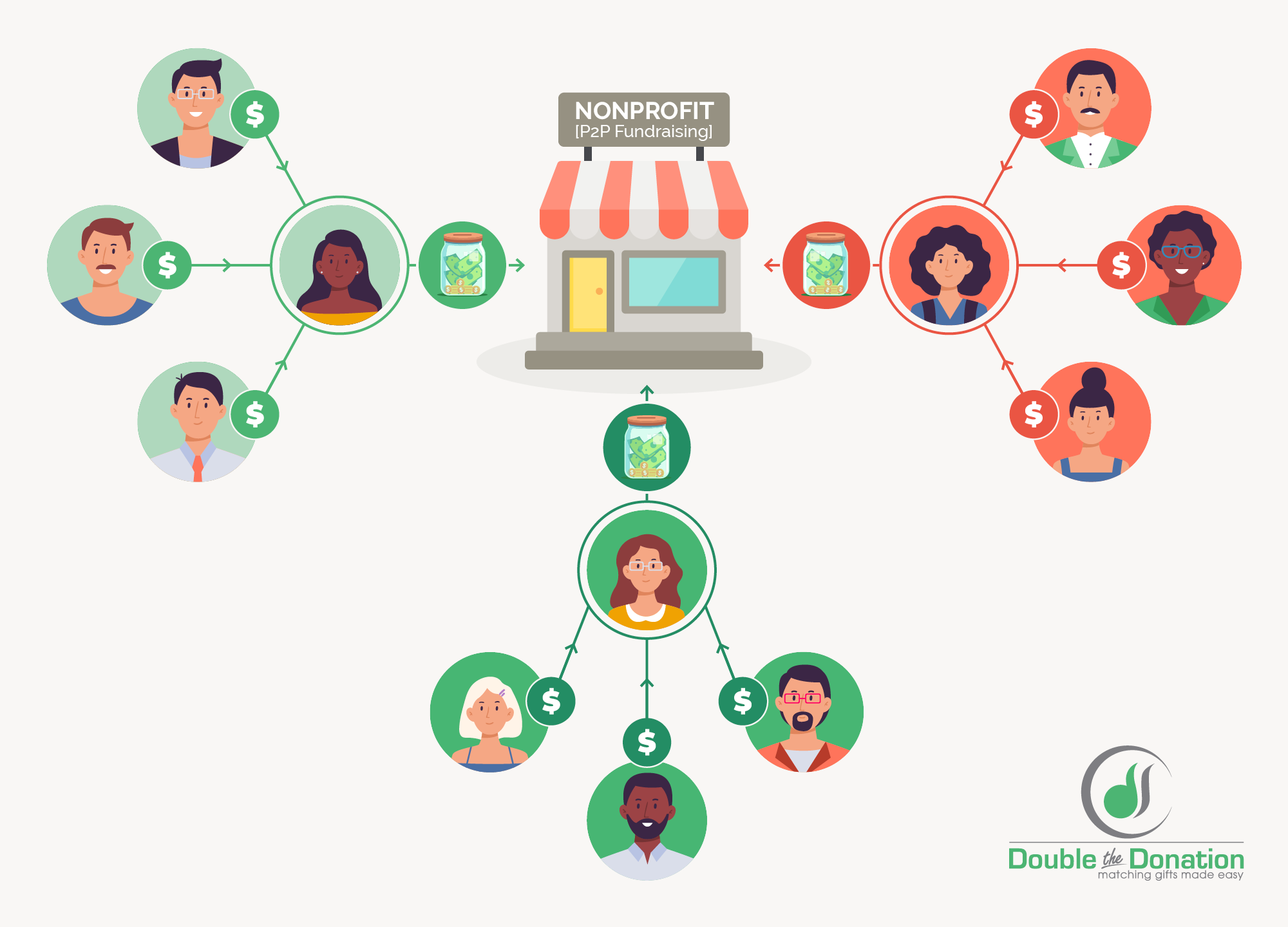
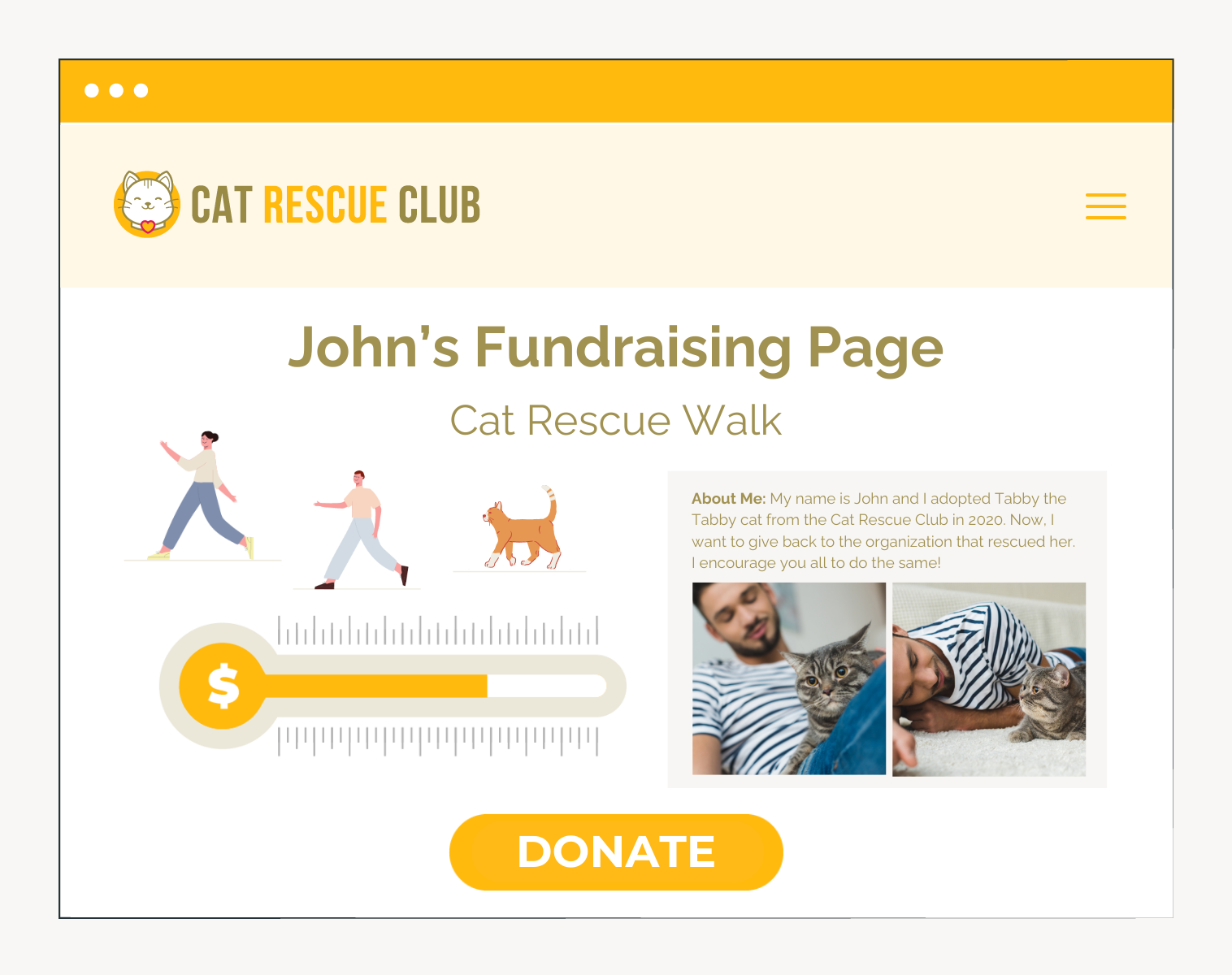

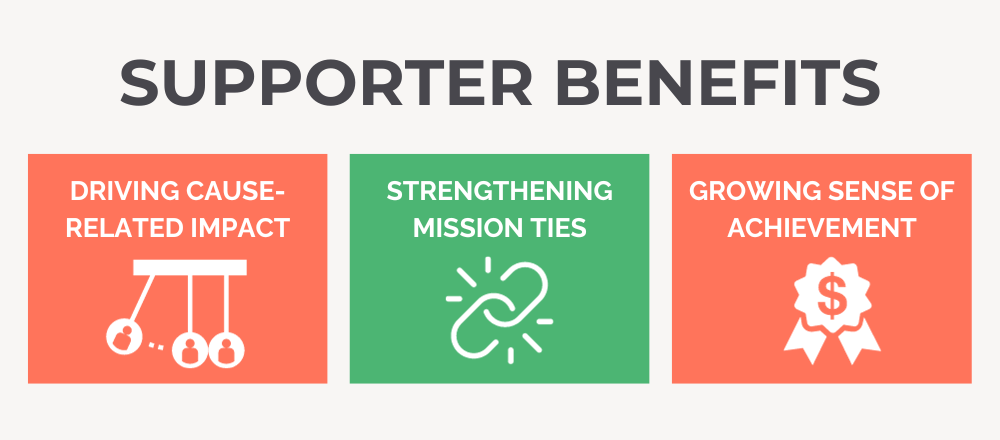
 Run/walk/rides — Including 5K races, marathons, cycling events, and more, participants seek sponsors who donate or pledge their support for the effort.
Run/walk/rides — Including 5K races, marathons, cycling events, and more, participants seek sponsors who donate or pledge their support for the effort.
